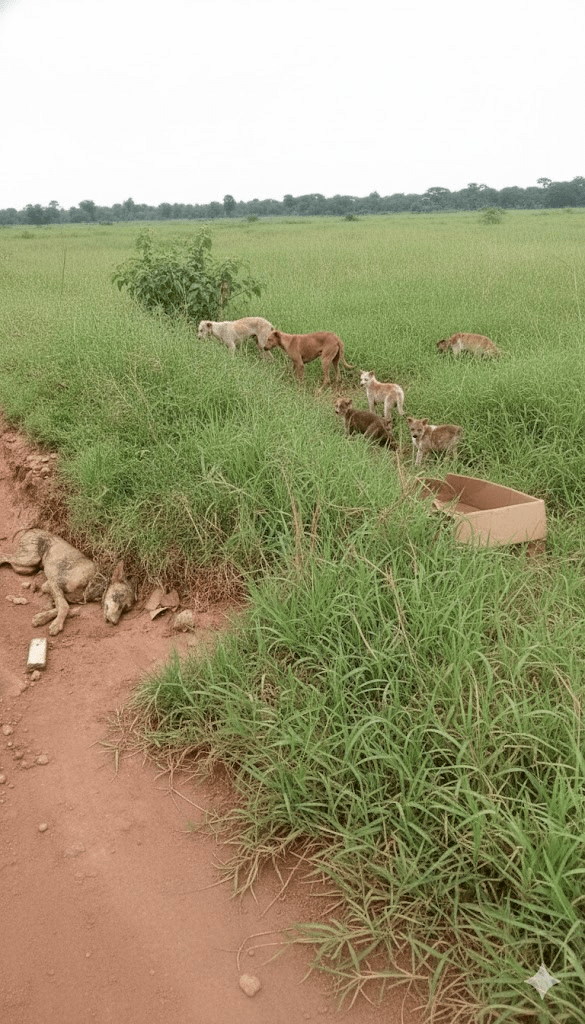The sight of a deceased dog on the side of a rural road is a poignant and all too common occurrence, painting a stark picture of the challenges faced by stray and neglected animals. This particular scene, with the animal lying motionless beside a dirt path, partially obscured by overgrowth, evokes a sense of sadness and raises immediate questions about its life and final moments. The subtle details—the earthy tones of the soil, the green blades of grass hinting at life continuing around the stillness—only deepen the emotional impact. It serves as a somber reminder of the vulnerabilities of creatures who often depend entirely on human compassion and intervention for their well-being. This image, though difficult to view, compels us to look closer at the silent suffering that often goes unnoticed in the periphery of our daily lives, urging a deeper reflection on our collective responsibility towards animal welfare.

The plight of stray animals is a global issue, transcending geographical boundaries and socio-economic statuses. Millions of dogs and cats roam urban and rural landscapes, facing daily struggles for survival. Their lives are often marked by hunger, disease, exposure to harsh weather, and the constant threat of injury or death from traffic accidents or human cruelty. The image of this dog serves as a stark emblem of this widespread problem, highlighting the individual tragedies that collectively form a crisis of animal welfare.

One of the primary factors contributing to the large stray animal population is irresponsible pet ownership. Uncontrolled breeding, abandonment, and a lack of identification for pets mean that countless animals are born into or quickly become part of the street population. The absence of widespread spay/neuter programs in many regions exacerbates the problem, leading to an exponential increase in stray animal numbers, each facing a precarious existence.

The consequences of a large stray animal population extend beyond the individual suffering of the animals. They can pose public health risks, including the spread of diseases like rabies, and can also contribute to environmental concerns. Furthermore, the emotional toll on communities that witness the suffering of these animals is significant, fostering a sense of helplessness and sadness.

Addressing the issue of stray animals requires a multi-faceted approach. This includes widespread public education campaigns on responsible pet ownership, accessible and affordable spay/neuter services, and effective animal identification programs such as microchipping. Local government support for animal shelters and rescue organizations is also crucial for providing care and facilitating adoptions.







